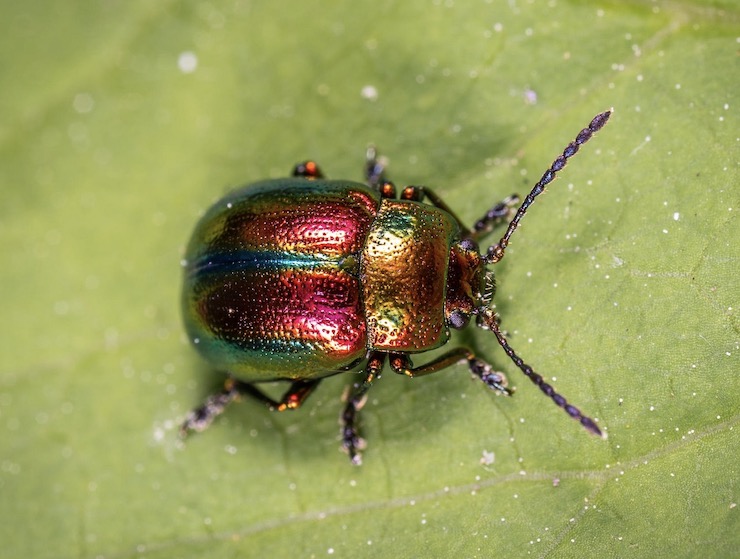Bees, Flies and Beetles: “Bug-Bots” Are Coming to Drone World

Miniaturization is the wave of the future, affecting every industry imaginable. Even the diminutive world of drones is about to get smaller.
UAVs as tiny as insects are now being developed for a wide range of uses, from military spying to farm management and construction inspections. “Bug-bots” modeled on bees and flies can be powered by microscopic battery cells and flown remotely or autonomously – including some, while tethered to an external power source, almost indefinitely.
The United States Army is developing “Black Hornet” drones that can fit in a soldier’s hand and be launched to capture HD images of enemy troops and installations. The drone, weighing just a few ounces, flies at a speed of 13 miles per hour at a maximum altitude of 1.5 kilometers, and can stay airborne for 22 minutes without the need for recharging. Under current plans, each platoon or individual soldier will carry two Black Hornets, one for daytime use, the other equipped with an infrared camera to film at night. Because of its aerodynamic design and other features, it’s practically noiseless making it virtually undetectable.
Even more remarkable, perhaps, is “Robo-Bee,” an even smaller insect-like drone with a wingspan of just 3 centimeters. The drone has actual wings that flap rapidly just like a bee’s and can carry the tiny aircraft into forbidding and inaccessible environments like mine shafts where humans might encounter safety risk. Unlike the Black Hornet, Robo-Bee’s designers aren’t seeking a stealth capability; in fact, they’re hoping to deploy the craft in large bee-like swarms – for example, to pollinate farm crops or to conduct search-and-rescue missions.
The greatest challenge in the development of Robo-Bee is supplying the tiny drone with autonomous power and decision-making capabilities. Currently, it’s connected to a small tether that allows a remote pilot to maneuver it; engineers are now working to miniaturize sensors to give the drone an onboard “brain” as well as refining its physical design to improve its “body.” Robo-bees must also be configured and programmed so that they can think beyond themselves and fly in a swarm formation. These improvements take time.
Meanwhile, other drone designers are working on “Robo-Fly,” an even smaller insect-like drone that flies without a tether, thanks to its wafer-thin circuit board that receives energy from a laser beam. Amazingly, the drone weighs just a little more than a toothpick. And unlike Robo-Bee, Robo-Fly has an onboard “brain” that actually mimics the way a fly “thinks,”and tells its fly-like wings when to flap. Despite its tiny size, the drone’s circuit board can store 240 volts of energy. For its autonomy and versatility, industry analysts have dubbed Robo-Fly the “future of micro-robots.”
It’s worth mentioning that nano drone designers aren’t only mimicking insect life – in some cases, they are also trying to harness it. Officially known as the “Cyborg Beetle Project,” the experiment features the use of a live beetle with its wing muscles attached to six electrodes. A remote pilot can direct the insect to fly, stop, land or hover. Engineers chose beetles because they are strong enough to carry sensors to collect data remotely, as needed, as well as a microphone and speaker that could allow them to function as mobile communicators – for example, in a stand-off with an armed suspect, or with a person trapped or injured and in need of rescue.
These are just four of the latest experiments with nano drones that may be commercialized in some fashion within the next few years. The demand from the public and private sector for tiny drones that can perform delicate tasks stealthily in forbidding environments and at extremely low cost is growing. The fully functional Black Hornet Drone prototype costs $195,000, a price that the Pentagon can well afford; other prototypes are still being refined and tested and will need to be produced at scale to become truly marketable.
Birds, of course, are still a major source of creative inspiration in the drone industry; engineers still look to them to better understand the aerodynamics of machine flight. But in the 21st century, thanks to breakthroughs in miniaturization, the drone industry may be entering a brave new world of design technology. with attention shifting rapidly to another flying species: insects.
|